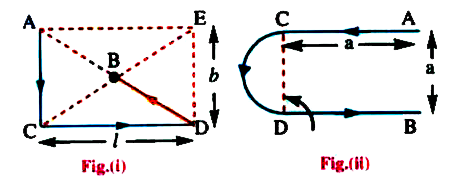A stone is thrown vertically upward with a speed of 10.0ms−1 from the edge of a cliff 65 m high. What will be its speed just before hitting the bottom ?Solution in Telugu
3.14m/s
37.14m/s
13.71m/s
14.71m/s
The correct Answer is:B
Step by step video, text & image solution for A stone is thrown vertically upward with a speed of 10.0 "ms"^(-1) from the edge of a cliff 65 m high. What will be its speed just before hitting the bottom ? by Physics experts to help you in doubts & scoring excellent marks in Class 11 exams.
Topper's Solved these Questions
- BOOK - AAKASH SERIESCHAPTER - MOTION IN A STRAIGHT LINEEXERCISE - Exercise -331videos
MOTION IN A STRAIGHT LINE
- BOOK - AAKASH SERIESCHAPTER - MOTION IN A STRAIGHT LINEEXERCISE - PROBLEM47videos
MOTION IN A STRAIGHT LINE
- BOOK - AAKASH SERIESCHAPTER - MOTION IN A STRAIGHT LINEEXERCISE - Exercise 2A30videos
MOTION IN A STRAIGHT LINE
- BOOK - AAKASH SERIESCHAPTER - MOTION IN A PLANE EXERCISE - Practice Exercise84videos
MOTION IN A PLANE
- BOOK - AAKASH SERIESCHAPTER - NEWTONS LAWS OF MOTION EXERCISE - ADDITIONAL PRACTICE EXERCISE PRACTICE SHEET (ADVANECED) (Matrix Matching Type Questions)1videos
NEWTONS LAWS OF MOTION
Similar Questions
A particle traversed half of the distance with a velocity of V0. The remaining parts of the distance was covered with velocity V1 for half of the time and with V2 for other half of the time. Find the mean velocity of the particle averaged and the whole time of motion
03:55View SolutionFind the distance covered by the particles in the following figures,
and
while a particle travels from A to B as shown by the arrows
 View Solution
View Solution(A): Displacement of a body may be zero when distance travelled by it is not zero.
(R) : The displacement is the longest distance between initial and final positions..02:41View SolutionA person runs along a circular path of radius 5m. Find the magnitude of the displacement if he runs all the way around the circle ?
01:23View SolutionThe system shown in the figure is given an acceleration 'a' towards left. Assume all contact surfaces to be smooth (m: mass of the sphere) The magnitude of the contact force between wedge and sphere between wedge and sphere at A is xmg√3 then 'x' is
 03:25View Solution
03:25View SolutionA heavy stone is thrown from a cliff of height h with a speed v. The stone will hit the ground with maximum speed if t is thrown
04:53View SolutionA heavy stone is thrown from a cliff of height h with a speed .v. The stone will hit ground with maximum speed if it is thrown:
View SolutionA stone is thrown vertically upward with a speed of 10.0ms^(-1) from the edge of a cliff 65m high.What will be its speed just before hitting the bottom.
02:20View Solution[" 68.A stone is thrown vertically upward with a "],[" speed of "10.0ms^(-1)" from the edge of a cliff "],[65m" high.What will be its speed just before "],[" hitting the bottom ? "],[[" 1) "3.14m/s," 2) "37,14m/s],[" 3) "13.71m/s," 4) "14.71m/s]]
02:52View SolutionA stone is thrown vertically upward with a speed of 10.0ms−1 from the edge of a cliff 65 m high. What will be its speed just before hitting the bottom ?
02:52View SolutionA stone is thrown vertically upward with a speed of 10.0 ms−1 from the edge of a cliff 65 m high.How much later will it reach the bottom of the cliff ? What will be its speed just before hitting the bottom ?
View SolutionA stone is thrown vertically upward with a speed of 10.0 ms^(-1) from the edge of a cliff 65 m high.What will be its speed just before hitting the bottom?
View SolutionA heavy stone is thrown from a cliff of height h with a speed v. The stone will hit the ground with maximum speed if it is thrown
View SolutionA heavy stone is thrown from a cliff of height h with a speed v. The stone will hit the ground with maximum speed if it is thrown
View SolutionA heavy stone is thrown from a cliff of height h with a speed v. The stone will hit the ground with maximum speed if it is thrown
View SolutionA stone is thrown vertically upward with a speed of 10.0ms−1 from the edge of a cliff 65 m high. What will be its speed just before hitting the bottom?
View Solution

